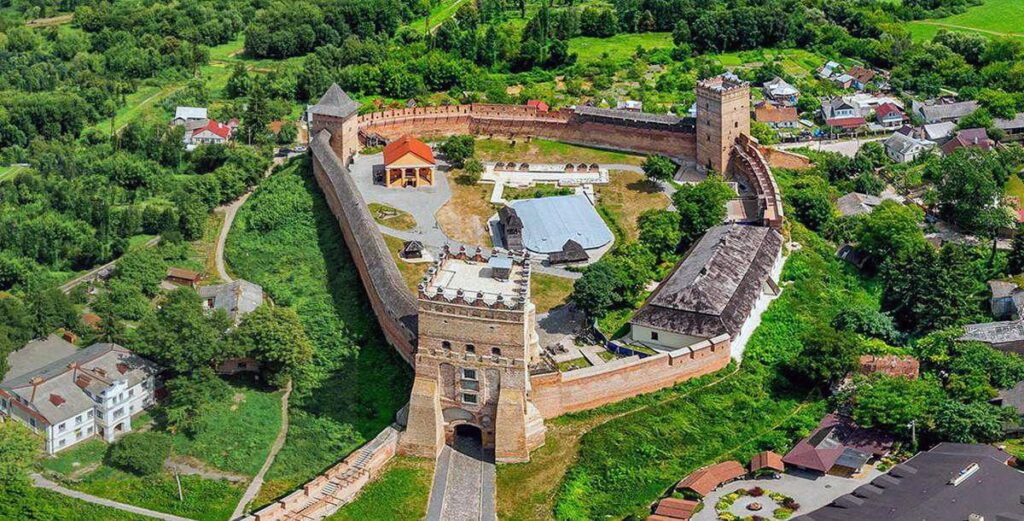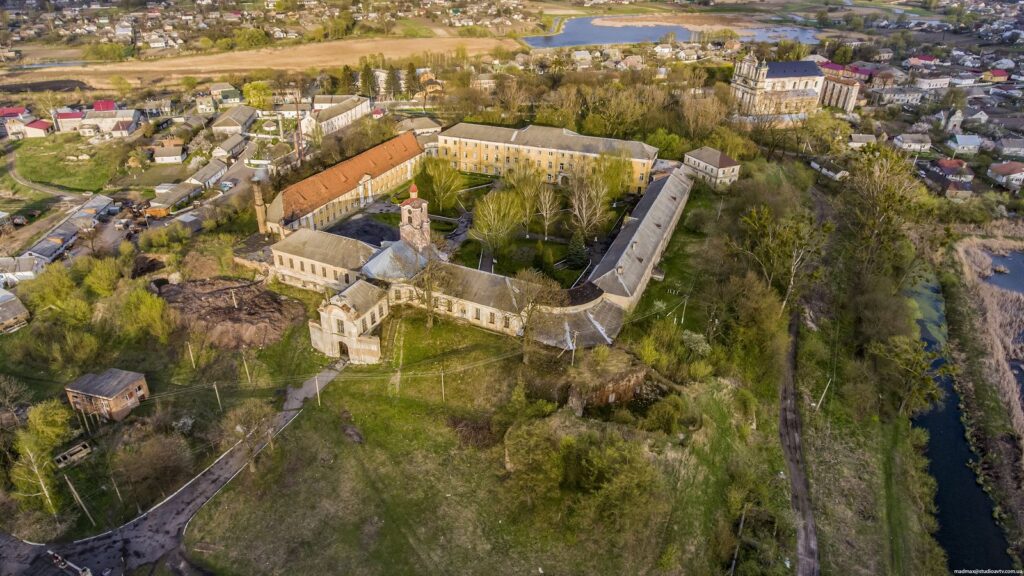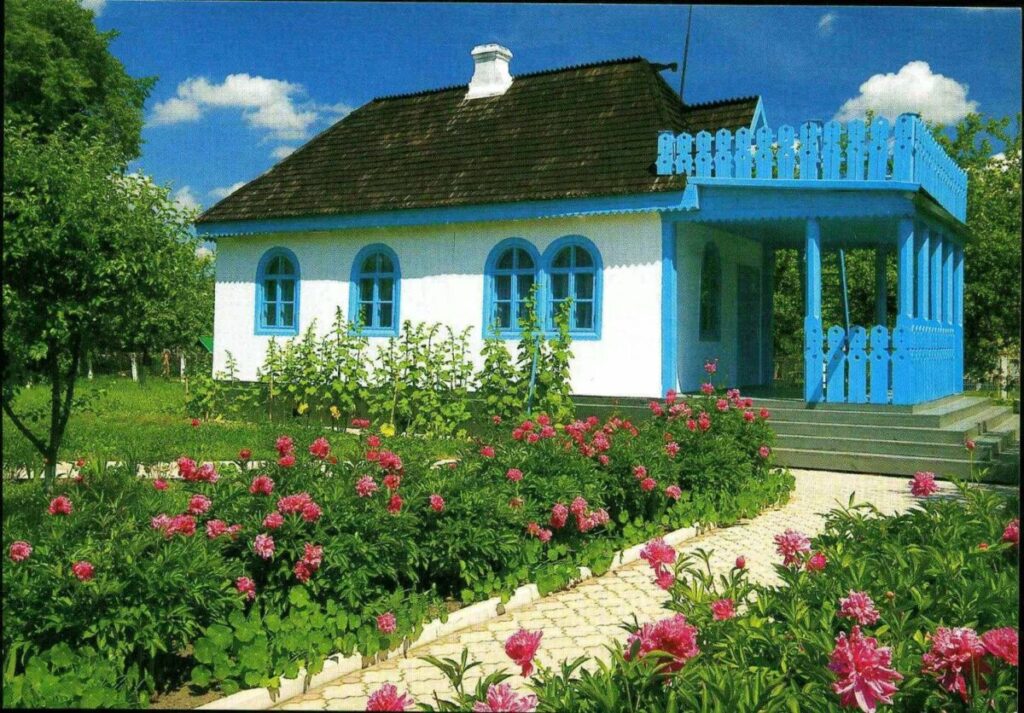Volyn Region [Volhynia] is an historic province in Central and Eastern Europe, situated between south-eastern Poland, south-western Belarus, and Western Ukraine. The alternative name for the region is Lodomeria after the city of Volodymyr-Volynsky (previously known as Volodymer), which was once a political capital of the medieval Volhynian Principality. According to some historians, the region is named after a semi-legendary city of Volin or Velin, whose name may come from the Proto-Slavic root *vol/vel- ‘wet‘.
The territory of the Volyn Region was mentioned in the works of Arabian scholar Al-Masudi, who called the local tribe as “people of Valin” In one of his 10th century writings. Volyn’s early history coincides with that of the duchies or principalities of Halych and Volhynia. These two successor states of the Kievan Rus formed Halych-Volhynia between the 12th and the 14th centuries.
After the disintegration of the Grand Duchy of Halych-Volhynia circa 1340, the Kingdom of Poland and the Grand Duchy of Lithuania divided the region between themselves. After 1569 Volhynia was organized as a province of the Polish-Lithuanian Commonwealth. During this period many Poles and Jews settled in the area and both Roman and Greek Catholic churches were established in the province.
After the Third partition of the Polish-Lithuanian Commonwealth in 1795, the Volyn Region was annexed as the Volhynian Governorate of the Russian Empire. The Russian government greatly changed the religious make-up of the area by forcibly liquidating the Ukrainian Greek Catholic Church, transferring all of its buildings to the ownership and control of the Russian Orthodox Church. Many Roman Catholic church buildings were also transferred to the Russian Church.
At the end of the First World War, nationalists tried to form the Ukrainian National Autonomy. The area had seen a revival of Ukrainian [Ruthenian] culture after years of Russian oppression and the denial of Ukrainian traditions. After German troops were withdrawn, the whole region was engulfed by a new wave of military aggression by both the Poles, Bolsheviks, and Russians competing for control of the territory. Ukraine was forced to fight on three fronts – Bolsheviks, Poles and a Volunteer Army of Imperial Russia. In 1921, after the end of the Polish–Soviet war, a treaty known as the Peace of Riga divided the territory between Poland and the Soviet Union.
From 1935 to 1938 the government of the Soviet Union deported numerous nationals from Volhynia in a population transfer to Siberia and central Asia, as part of the de-kulakization, an effort to suppress peasant farmers in the region. Following the signing of the Molotov–Ribbentrop Pact in 1939 and the subsequent invasion and division of Polish territories between the Reich and the USSR, the Soviet Union invaded and occupied the Polish part of Volhynia which resulted in most of the Polish and ethnic German-minority population of Volhynia being deported to the Polish territories that had been annexed by Nazi Germany.
During the subsequent German invasion, an estimated 40,000 to 60,000 Polish people in Volhynia were massacred by the Ukrainian Insurgent Army. In 1945 following the end of World War II, the Soviets expelled ethnic Germans from Volhynia – because Nazi Germany had used ethnic Germans in eastern Europe as a pretense for invading these areas earlier – all part of a mass population transfer after the war resulting in most of the remaining ethnic Polish population being expelled to Poland as well.
Since the dissolution of the Soviet Union in the 1990s, Volhynia has been an integral part of Ukraine.
 Lubart Castle (the 13th-14th centuries) also known as Lutsk Castle or Upper Castle in Lutsk – is the most prominent landmark of the Volyn region. It was named after Demetrius of Liubar or Liubartas the last ruler of a united Galicia-Volhynia. The current castle, towering over the Styr River, was built mostly in the 1340s. Three main towers, now named “Lubart”, “Švitrigaila” (after Lithuanian princes) and the “Bishop”, were built up in the course of the 16th and 17th centuries. Several museums are open on its territory: paintings, bells, building ceramics, printing, and weapons. On 2 July 1941 1,160 Jews were murdered within the walls of the castle. There is no monument or marker for this tragedy within the castle.
Lubart Castle (the 13th-14th centuries) also known as Lutsk Castle or Upper Castle in Lutsk – is the most prominent landmark of the Volyn region. It was named after Demetrius of Liubar or Liubartas the last ruler of a united Galicia-Volhynia. The current castle, towering over the Styr River, was built mostly in the 1340s. Three main towers, now named “Lubart”, “Švitrigaila” (after Lithuanian princes) and the “Bishop”, were built up in the course of the 16th and 17th centuries. Several museums are open on its territory: paintings, bells, building ceramics, printing, and weapons. On 2 July 1941 1,160 Jews were murdered within the walls of the castle. There is no monument or marker for this tragedy within the castle.
 Radziwill Castle also known as Olyka Castle in Olyka was the principal seat of the Radziwill family in Volhynia from 1564 until the late 18th century. The Olyka Castle comprises four residential buildings of unequal height, forming a court in the middle and encircled by a moat. The towers of the original castle have crumbled to the ground, but the network of bastions is still in place. Other buildings of the castle complex include a 17th-century gateway, a two-storey clock tower, and the Collegiate Church of the Holy Trinity (1635–1640).
Radziwill Castle also known as Olyka Castle in Olyka was the principal seat of the Radziwill family in Volhynia from 1564 until the late 18th century. The Olyka Castle comprises four residential buildings of unequal height, forming a court in the middle and encircled by a moat. The towers of the original castle have crumbled to the ground, but the network of bastions is still in place. Other buildings of the castle complex include a 17th-century gateway, a two-storey clock tower, and the Collegiate Church of the Holy Trinity (1635–1640).
During the German occupation of Poland (World War II), the Radziwiłł Fortress was the site of Nazi German persecution of Ołyka Jews in the Holocaust. Memorials outside Olyka mark the place of execution of more than 4,000 Jews in Summer 1942 – in and around the Olyka ghetto, Radziwiłł Fortress, Olyka Castle, and surrounding areas.
 Museum-Estate of Lesya Ukrainka in Kolodyazhne. Lesya Ukrainka, one of the most famous Ukrainian writers known for her poems and plays, spent her childhood and youth on this estate from 1882 to 1897.
Museum-Estate of Lesya Ukrainka in Kolodyazhne. Lesya Ukrainka, one of the most famous Ukrainian writers known for her poems and plays, spent her childhood and youth on this estate from 1882 to 1897.
The poems and plays of Ukrainka are associated with her belief in her country’s freedom and independence. She actively opposed Russian tsarism and was a member of Ukrainian Marxist organizations. Ukrainka also wrote epic poems, prose dramas, prose, several articles of literary criticism, and several sociopolitical essays. She was best known for her plays Boyarynya (1914; The Noblewoman), a psychological tragedy centered on the Ukrainian family in the 17th century, which refers directly to Ukrainian history, and Lisova pisnya (1912; The Forest Song), the characters of which include mythological beings from Ukrainian folklore.
If you’ve got any questions, please do not hesitate to call, text or email us. We’re here to help you.
+380 (50) 242 75 54
dborysenko@gmail.com
ancestry@ukrainian-ancestry.com